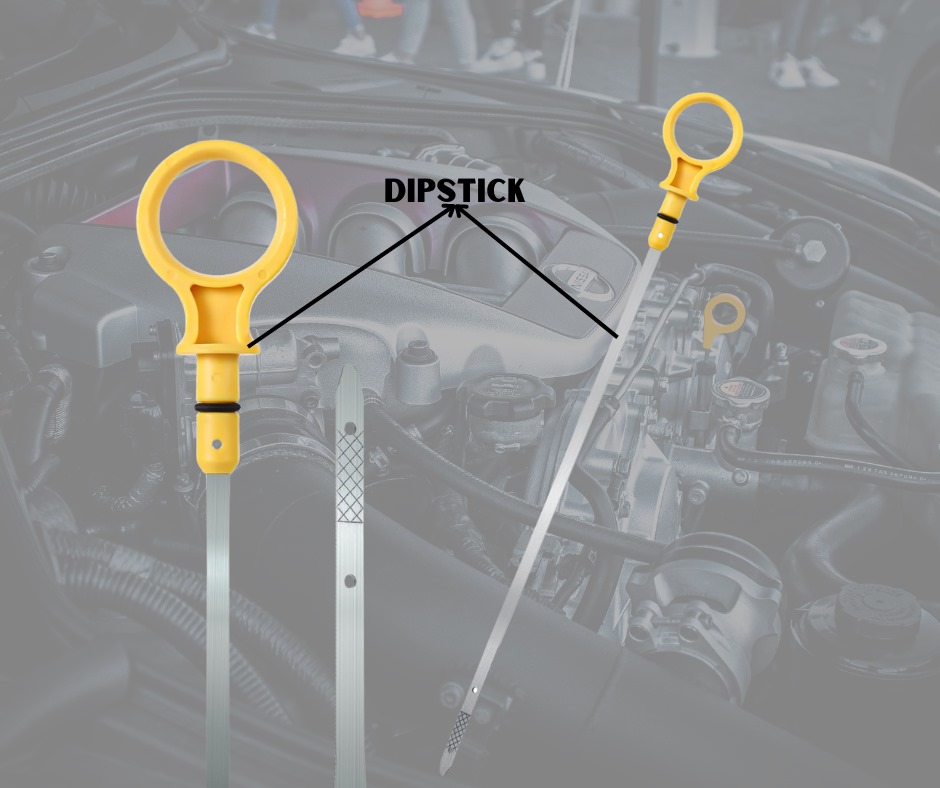Can a Car Drive Without a Dip Stick?

Explore the critical role of the dipstick in vehicle maintenance and whether your car can operate without it.
Understanding the Function of a Dipstick in Your Car
The dipstick is a crucial component in your car's engine oil system. Its primary function is to measure the oil level in the engine and ensure that it is within the recommended range. By providing a visual indication of the oil level, the dipstick allows you to monitor the health of your engine and take necessary actions if the oil level is too low or too high.
In addition to measuring the oil level, the dipstick also provides important information about the oil's condition. It allows you to check the color and consistency of the oil, which can help identify any potential issues such as contamination or excessive wear.
Overall, the dipstick plays a vital role in maintaining proper engine lubrication and preventing potential damage to your car's engine.
Risks and Consequences of Driving Without a Dipstick
Driving without a dipstick can have serious consequences for your car's engine health and overall performance. Without the ability to monitor the oil level, you risk running the engine with insufficient oil, which can lead to increased friction, heat, and wear. This can eventually cause severe engine damage and potentially result in a complete engine failure.
Furthermore, without the dipstick, you won't be able to check the oil's condition, which means you might miss signs of contamination, coolant leaks, or other issues that could be affecting your engine. Regularly checking the oil level and condition is essential for early detection of any problems and taking appropriate maintenance measures.
Alternative Technologies to the Traditional Dipstick
While the dipstick has been a standard feature in cars for many years, some newer car models are equipped with alternative technologies for measuring oil levels. These technologies include electronic oil level sensors and oil life monitoring systems.
Electronic oil level sensors use sensors placed directly in the oil pan to measure the oil level accurately. The information is then relayed to the car's onboard computer system, which can display the oil level on the dashboard. This technology eliminates the need for a physical dipstick and provides more precise and real-time oil level readings.
Oil life monitoring systems, on the other hand, use various sensors and algorithms to estimate the remaining useful life of the engine oil. These systems take into account factors such as engine operating conditions, mileage, and temperature to determine when an oil change is needed. While they may not provide a direct oil level measurement, they can help ensure that the oil is changed at the appropriate time.
It's important to note that not all car models have these alternative technologies, and older vehicles may still rely on the traditional dipstick for oil level checks. If you're unsure about the oil level measurement method in your car, consult your vehicle's owner manual or contact a professional mechanic.
How to Check Your Car’s Oil Level Without a Dipstick
If your car doesn't have a dipstick and relies on alternative technologies for oil level measurement, you can still check the oil level using the car's onboard computer system. Follow these steps:
1. Start your car's engine and let it run for a few minutes to warm up the oil.
2. Locate the oil level display on your car's dashboard. It may be represented by an oil can symbol or a digital readout.
3. Access the oil level display menu using the car's controls. Refer to your vehicle's owner manual for specific instructions.
4. Check the oil level indicated on the display. It should be within the recommended range.
If the oil level is low or outside the recommended range, consult your vehicle's owner manual for instructions on adding oil or contact a professional mechanic for assistance. It's important to address any oil level issues promptly to maintain your car's engine health.
Preventive Measures and Regular Maintenance Tips
To ensure your car's engine stays in optimal condition, it's essential to follow preventive measures and perform regular maintenance. Here are some tips:
1. Regularly check the oil level using the dipstick or alternative technologies if your car doesn't have one.
2. Monitor the oil's condition, including its color and consistency. If you notice any abnormalities, such as a milky appearance or metallic particles, have the oil checked by a professional mechanic.
3. Follow the recommended oil change intervals specified in your vehicle's owner manual. Regular oil changes help maintain proper engine lubrication and prevent contaminants from damaging the engine.
4. Use the recommended type and viscosity of oil for your car's engine. Refer to your vehicle's owner manual for the correct specifications.
5. Keep an eye on the engine temperature gauge and address any overheating issues promptly. Overheating can accelerate oil degradation and increase the risk of engine damage.
6. Schedule regular inspections and maintenance services with a qualified mechanic. They can identify potential issues early on and perform necessary repairs or adjustments.
By following these preventive measures and regular maintenance tips, you can maximize your car's engine performance, prolong its lifespan, and minimize the risk of driving without a dipstick.
Drop us a message from our facebook page or Chat us using the widget on the right to order a dip stick for your car.

 Loading..
Loading..